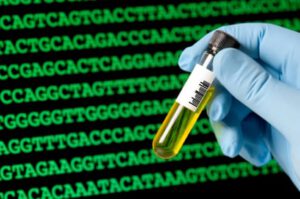In an age when even the president has to offer up his birth certificate to prove he was born in the U.S., it’s probably not going to be easy to convince skeptics that the world’s best known terrorist leader is dead.
Perhaps a little DNA fingerprinting will do the trick in this bit of the Global War on Terror (GWAT).
Among the flurry of stories about the demise of Osama bin Laden at the hands of American Special Forces are a few regarding the science behind how his identity was confirmed.
Beyond just seeing him with their own eyes and talking to his family – one of his wives reportedly confirmed the man killed was indeed Bin Laden – the team of Navy SEALs reportedly used DNA fingerprinting to offer the final proof.

In a wonderful post at the Scientific American, guest blogger Christie Wilcox breaks down the steps for a fast DNA fingerprinting process that could be done in less than five hours.
Wilcox lists how a DNA sample could be quickly extracted and then specific regions of interest amplified using PCR (short for “Polymerase Chain Reaction”). The regions of interest are places where short sequences of DNA repeat themselves a variable numbers of times. The more closely two people are related, the more likely it is for the numbers of repeats in each region to match. And if two samples are identical, the numbers of repeats will be also be identical.
The sample could be compared against another sample to verify identity or relatedness.
In the case of Bin Laden, several news sources reported that authorities had gotten DNA samples from his family members, including one from his sister who died recently at a hospital in Boston.
Kit Eaton, at FastCompany, writes about another type of DNA matching using technology similar to 23andMe’s genotyping test that typically takes about two weeks to complete but in this case could be done in as little as two hours.
A key difference between DNA fingerprinting and the genotyping done by 23andMe is the type of DNA variation being looked at.
Traditional forensic DNA fingerprinting looks at the lengths of short, repeated DNA sequences, while 23andMe’s genotyping technology analyzes a person’s DNA for specific locations where the sequence is known to vary, for example from an “A” to a “C”.
Our current genotyping platform looks at nearly 1 million such locations across the entire genome. This amount of DNA data is enough to give a broad range of information on both health and ancestry. In the case of relatives, it easily identifies close family members, but can also identify more distant cousins who share even small segments of identical DNA.



